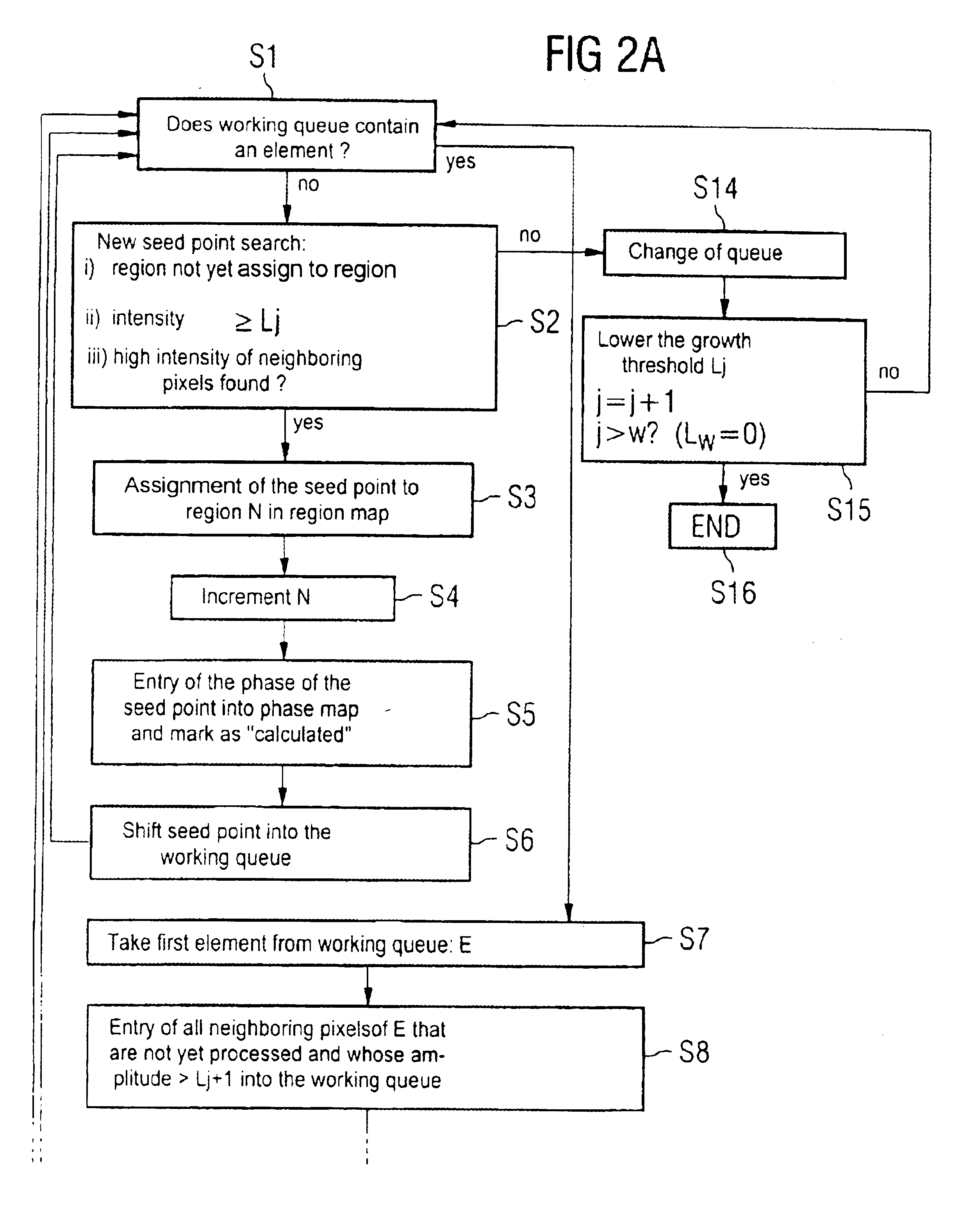Magnetic resonance method and apparatus for generating respective images from spin ensembles exhibiting different chemical shift
a spin ensemble and chemical shift technology, applied in the field of magnetic resonance tomography, can solve the problems of algorithmic errors, artifacts that arise, phase unwrapping algorithms where phase information is extrapolated over image regions without signal information, and achieve the effect of ensuring the consistency of fat-water classification
- Summary
- Abstract
- Description
- Claims
- Application Information
AI Technical Summary
Benefits of technology
Problems solved by technology
Method used
Image
Examples
Embodiment Construction
FIG. 1 shows a schematic illustration of a magnetic resonance tomography apparatus for generating a nuclear magnetic resonance image of a subject according to the present invention. The basic components of the magnetic resonance tomography apparatus are conventional, but the apparatus is controlled to operate in accordance with the invention. A basic field magnet 1 generates a temporally constant, strong magnetic field for polarization or alignment of the nuclear spins in the examination region of a subject such as, for example, a part of a human body to be examined. The high-homogeneity of the basic magnetic field required for the magnetic resonance measurement is defined in a spherical measurement volume M into which the parts of the human body to be examined are introduced. For supporting the homogeneity demands and, in particular, for eliminating time-invariable influences, shim plates of ferromagnetic material are attached at suitable locations. Time-variable influences are eli...
PUM
 Login to View More
Login to View More Abstract
Description
Claims
Application Information
 Login to View More
Login to View More - R&D
- Intellectual Property
- Life Sciences
- Materials
- Tech Scout
- Unparalleled Data Quality
- Higher Quality Content
- 60% Fewer Hallucinations
Browse by: Latest US Patents, China's latest patents, Technical Efficacy Thesaurus, Application Domain, Technology Topic, Popular Technical Reports.
© 2025 PatSnap. All rights reserved.Legal|Privacy policy|Modern Slavery Act Transparency Statement|Sitemap|About US| Contact US: help@patsnap.com



